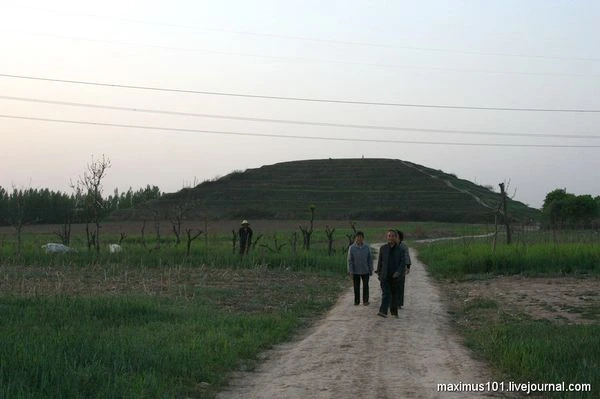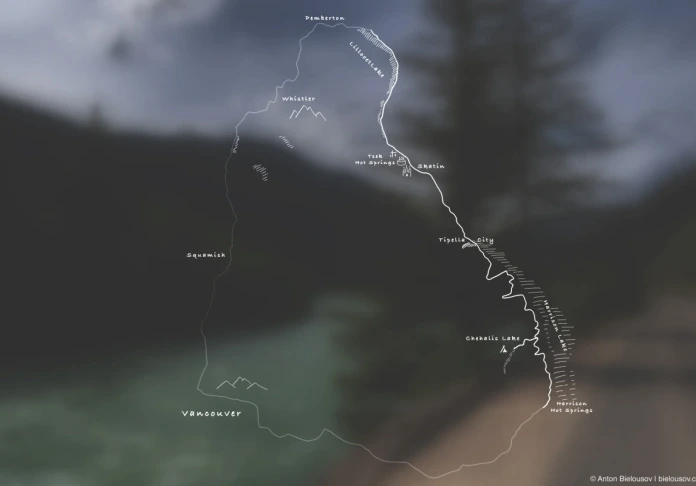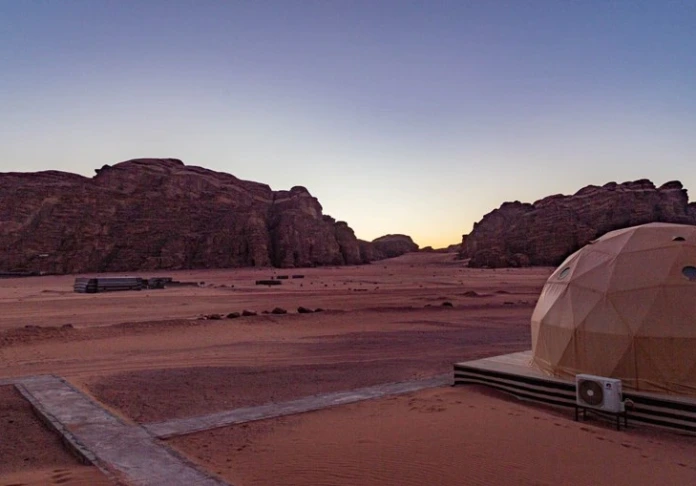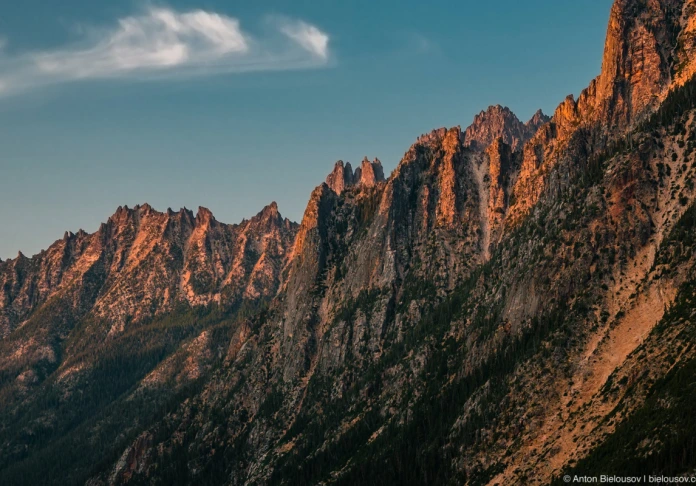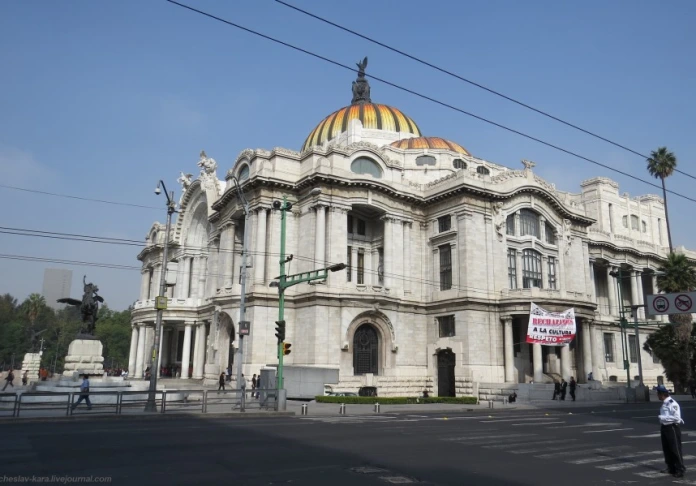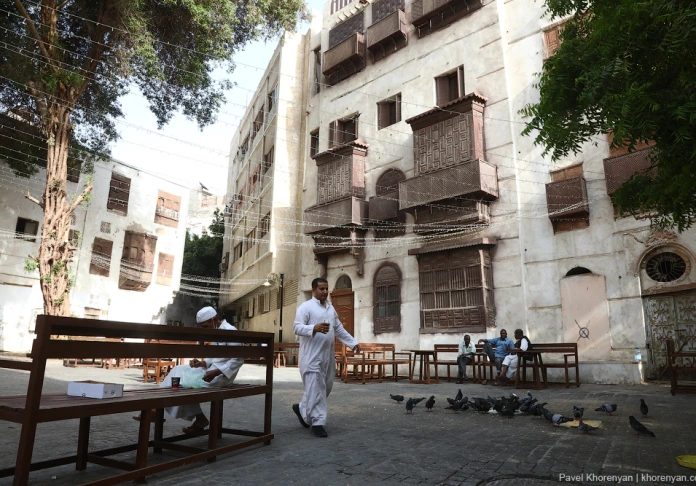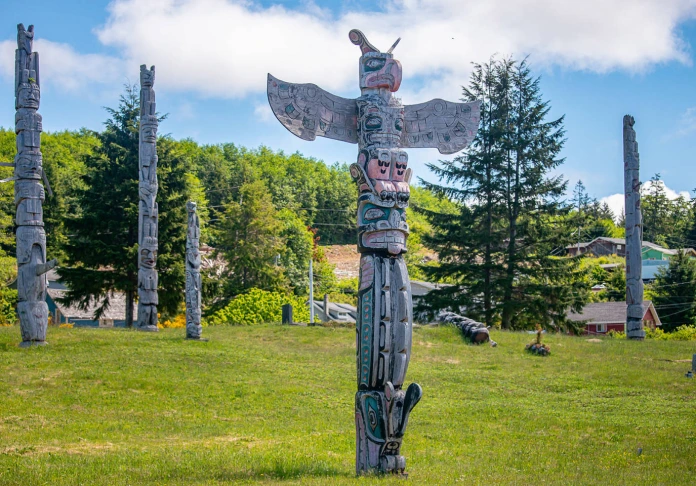Pyramids of China
The name of the "pyramid" stuck over the burial mounds of the Chinese emperors and their officials. This is largely justified, as these burial hills were in the form of a truncated pyramid, although there were other options burials Chinese nobility. Earthen mounds built by the Chinese special technology that allowed long to maintain the shape of these structures. Land in the construction of the pyramids not just pour - it carefully rammed, so earthen building strength approaching concrete. This keeps the sharp edges facilities even after the millennium. For this proven technology not only built the pyramids. In China, most of the buildings being constructed, in fact, out of the land - and palaces and pagodas, and the homes of ordinary people. Great Wall of China, on more of its length, is also made of rammed earth, but in more recent times, it began to build in stone and burnt bricks. I have already touched on themes of Chinese pyramids, in the story of the tomb of China's first emperor - Qin Shihuang. This is a continuation, here we are concerned with the imperial mausoleums of Han (206 BC - 220 BC) Older Chinese women look to the tomb of their great ancestors.
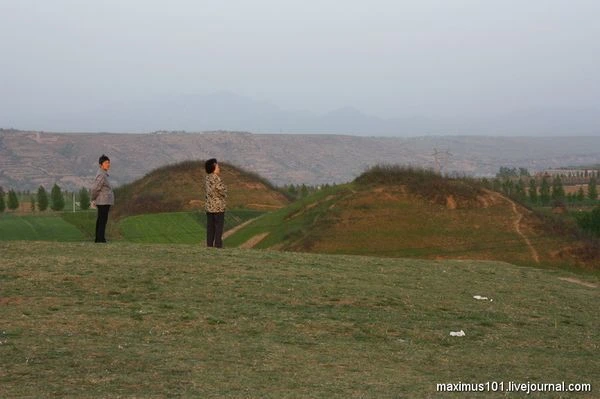
Burial mound of Emperor Qin - the starting point in the construction of the pyramids in China. His pyramid was not only the very first, but also the biggest. Pyramids subsequent emperors, above all, the state of Han, approaching the size of the tomb of Qin Shihuang, but surpass it, because no one and failed.
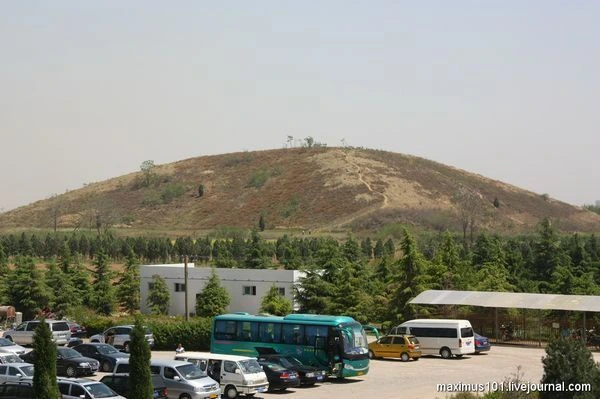
First, you need to make a little history of Chinese burials. Although Qin Shi Huang was the builder of the Great Pyramid, is not he outlined the idea of erecting a giant earth mounds over the graves in China. It is worth noting that the majority of scientists are inclined to think that the "Kurgan subject" was not originally inherent in Chinese. Burial of ancient Chinese dynasties Shang had any impressive ground facilities, which came to replace them Zhou dynasty also not tried very hard in this direction. Most likely, the idea of burial mounds came to China from the North, from the numerous nomadic tribes. In the whole zone of the steppe zone, from the Crimea to the Altai, with mounds was all right, the nomads - the Scythians, Sakas, erected them in considerable quantities. Particularly worth noting here, huge mounds of Tagar culture 5-6 centuries BC in the modern Khakassia. Outwardly, they are very similar to the Chinese earthen pyramid. Probably the first earthen building of its kind in China, has become a very impressive burial mound of the 4th century BC Duchy of Zhongshan, which is just south of Beijing. Zhongshan for the Chinese was barbaric kingdom, for its heart lies the so-called "white di" unknown tribes currently ethnicity, maybe they were Indo-Europeans and were related Yuezhi and Tochars. Once I upload photos from Tarim mummies Chinese, among them were many people of Indo-European origin. One way or another, but it brought the idea of the Chinese kurganostroitelstva to perfection, had built countless burial pyramids for their nobility.
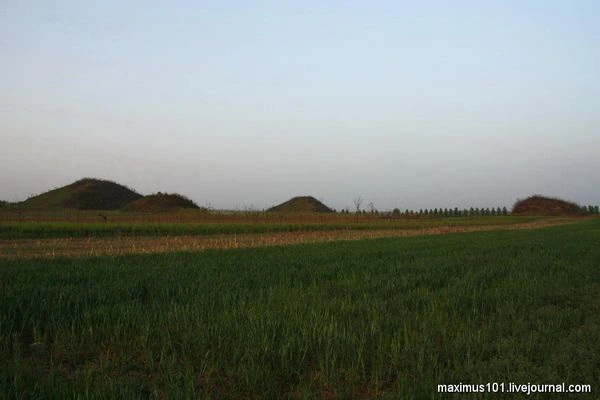
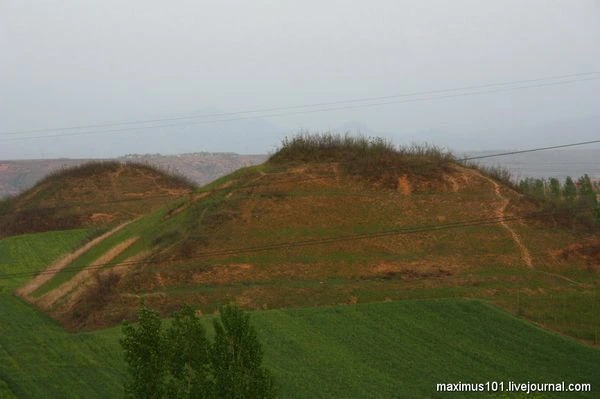
This story is dedicated mainly Han Dynasty pyramids located near the ancient city of Xi'an.
Map burials around Xi'an.
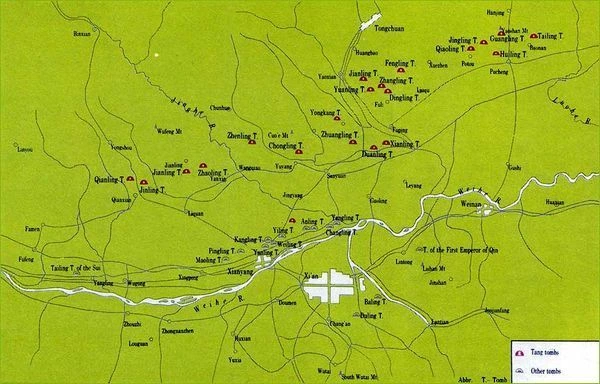
Han burial marked serogolubymi "mounds."
Burial of the Tang, respectively - red icons.
You can see that the pyramids are Han arc from east to west along the Weihe River. Each had its own huge mausoleum burial city - ling, and about the same in terms of how and at the mausoleum of Qin Shi Huang.
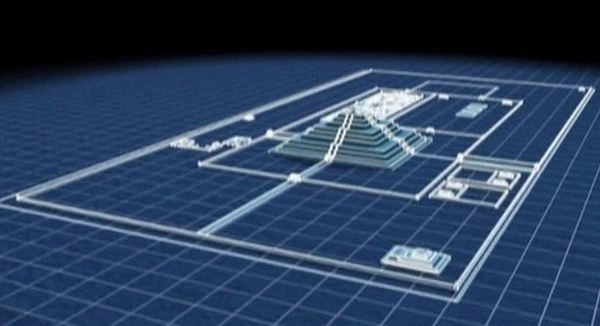
In this town lived a lot of people in the days of the Han emperors, sometimes forcibly resettled there are many aristocrats and their servants. This was done in order to control the last imperial power, plus, they had to take care of the mausoleums of the former Han rulers. There resettled soldiers, craftsmen and women, the late Emperor, the entire harem. In the old days, they would be all buried alive with the dead master, but since the Han Dynasty, became casualties are rare, of course, a couple of favorite concubines still added dropwise, where to go. But the entire imperial harem and servants continued to live, only to have next to the pyramid of the owner. Sometimes the number of the funeral of the city could be up to 50,000 people, as the Emperor Wu Maolin in the mausoleum. And this "city of the dead" had walls, and very real. Each mausoleum - a single fortress, according to the map, the city is a real burial zone defense walls of large and small mausoleums meshed to form a protective arc covering the capital - the city of Chang'an to the North. It came from the northern steppes in China invaders Huns. Dead emperors continued to defend his capital, as symbolized by acting on the imagination of the nomads with their gigantic pyramids, and in fact, covering the entire wall of the mausoleum adjoining metropolitan area. Visit the pyramids all at once, I have not had the opportunity, as their great variety and they are each from each other at a very good distance. So I chose two large burial complex for a cursory inspection - a complex of Emperor Jing Di - Yanlin (it will be a separate post), and the field pyramids Emperor Xuan Di - Doolin. Several large pyramids I came in Lens chance, I removed them, passing by the bus. First of all, it is worth noting the largest pyramid Han - Maolin mausoleum of Emperor Wu Di (141 BC on 87 BC), the mausoleum was worth a visit especially, if only for its size. Maolin Pyramid.
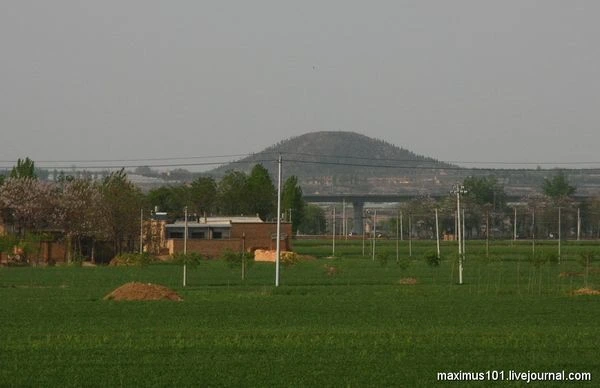
Maolin pyramid has a base of 240 by 240 meters and an approximate height of 50 meters. It is the largest mound, hill after the funeral of Qin Shihuang. It can be seen for tens of kilometers, but certainly better to come closer, the more her burial city has the highest number of accompanying burials, something around 175.
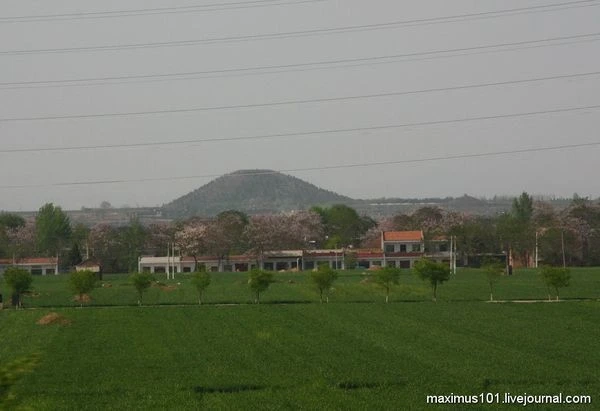
Pyramid Emperor Jing Di, its base 160 to 160 meters.
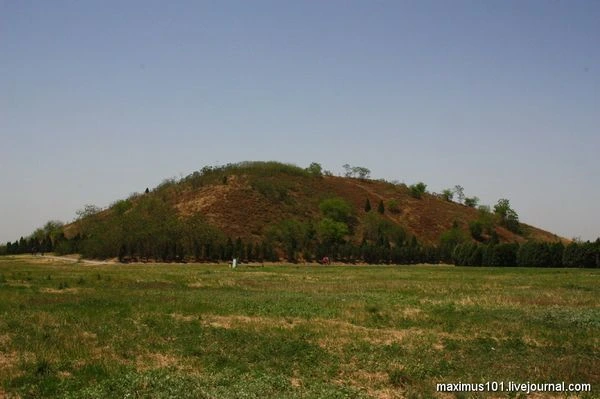
And almost the same size, the pyramid complex in the Empress Jing Di.
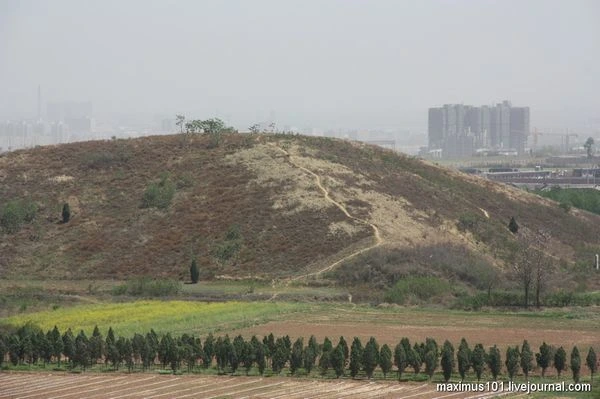
Very mysterious two-step pyramid Kanlin.
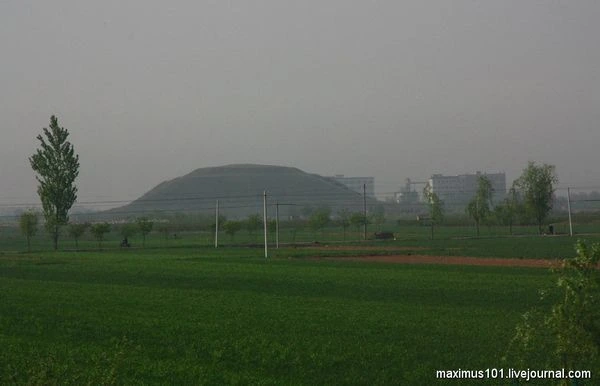
It seems intended for a young Emperor Emperor Ping of Han (ruled from 1 year to 5 BC AD) A total of 6 years! In 14 years, Emperor Ping of Han had died, or had helped him in this. Pyramid huge - the base 220 by 233 meters, the top of the pyramid area 50 by 60 meters.
Monstrous mound literally hangs over the suburbs of Sanya.
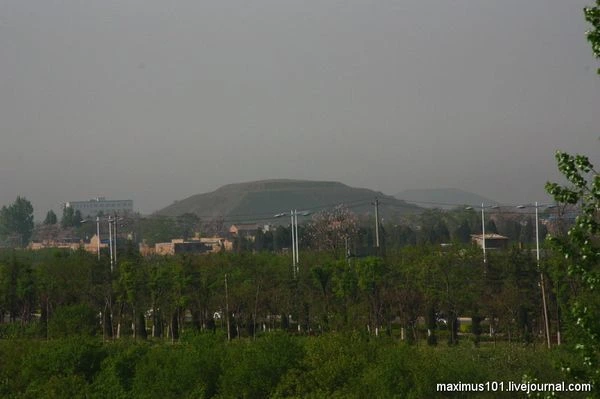
The beginning of our era - a reign of Wang Mang - great "favorites" and reformer, who founded his own dynasty Xin, which is true, and it is over. Attributed to him, and not without reason, poisoning infant emperor Emperor Ping of Han. Perhaps Wang Mang decided to make amends, built for Emperor Ping of Han huge tomb, and maybe he was preparing her for himself. Who knows ...
The complex Doolin Emperor Xuan Di, I decided to visit a specially located outside the main "defensive" line Han tombs, which runs north from. It lies to the south of modern Xi'an, but not very far away, almost immediately after the ring road, so to get to Doolin easier than to all other Han pyramids.
Now in the funeral city Doolin is a park for Chinese workers, even has an admission fee - 5 yuan .

From a distance, the pyramid looks impressive, but coming closer, it is difficult to find in dense stands. Park benches are rising up from north to south. Pyramid stands on top of the plateau. It is not clear how natural environment terrain may base of the pyramid is also man-made. Chinese mounds overgrown trees to look hard at times - it's like a fairy tale with the sailors who landed on the back of a huge whale, considering that it is an island. Here is the same as looking for a funeral mound, not realizing that the long wandering in his overgrown slopes, such as large-scale objects near the poorly perceived.
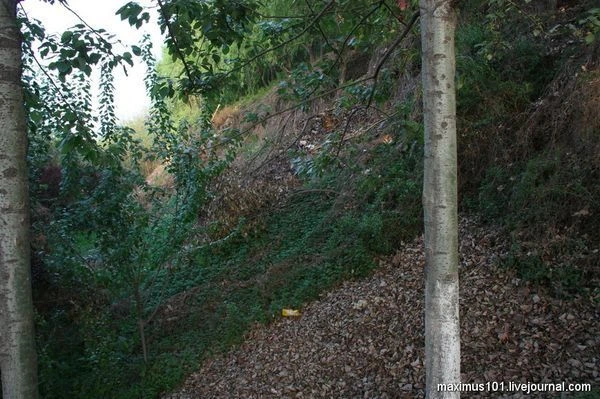
Mound itself devoid of vegetation and has a clear shape of a truncated pyramid.
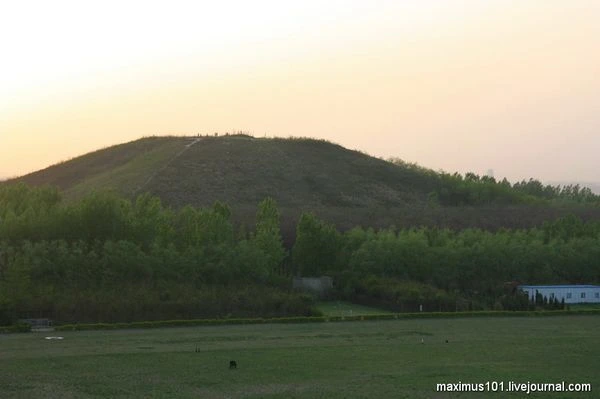
View of the park from the top of the pyramid. At the bottom of the stele are set later Chinese emperors in deference to the Emperor Xuan of Han.
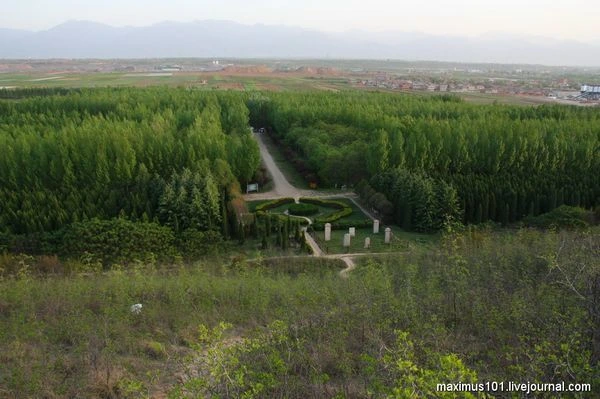
Pyramid Xuan Di has a base of 168 by 168 meters, it is much less than in Maolin and Kanlin. By the way, I wonder why ... After Xuan Di was very powerful emperor, during his State of the Han reached its peak.
The view from the height of the pyramid of the emperor, the distance is visible step pyramid of his wife.
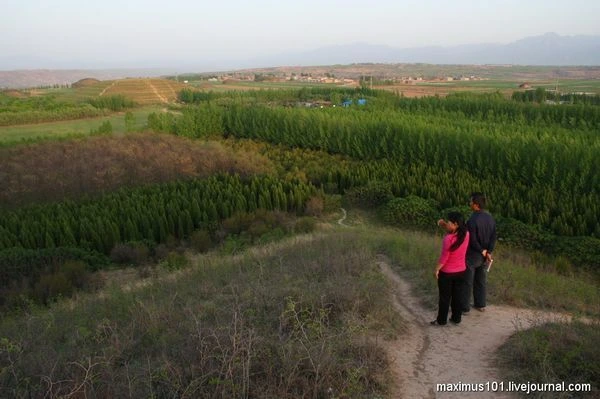
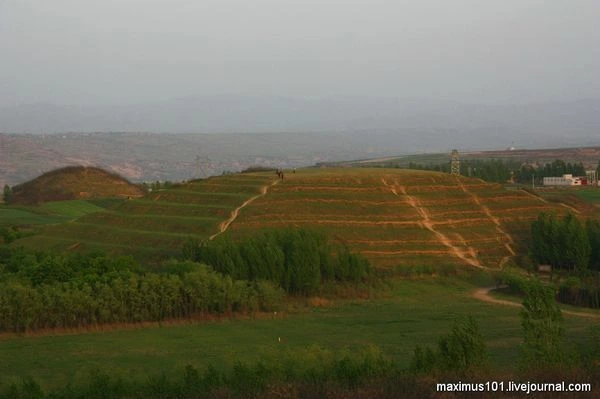
Pyramid wife Xuan Di many interesting mound of the emperor himself, though it is somewhat smaller (base 150 to 140), but it looks spectacularly well preserved thanks to the shape of stairs. Step Pyramid of the Empress.
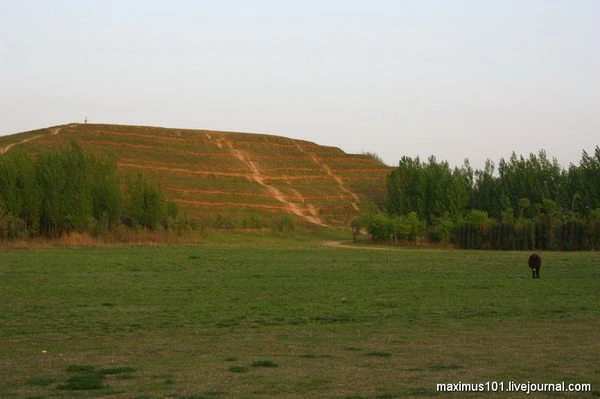
Way up.
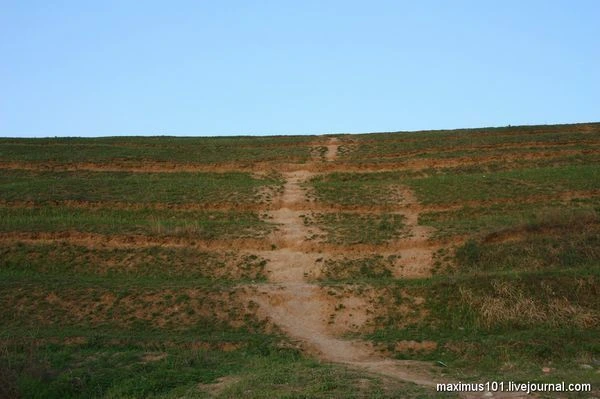
Stage clearly distinguishable even after thousands of years ...
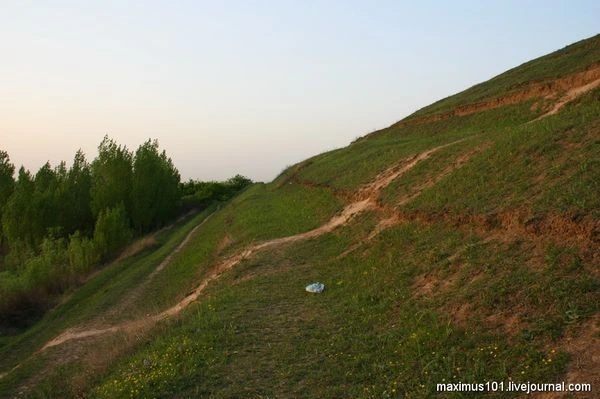
At the edge of the top platform, during my stay there, constantly walked funny man. Apparently, he was doing some kind, known only to him ritual. That's the way walked and walked, in the square, and he's a decent 48 to 43 meters. However, he mumbled something to himself tray - seems to "move" on the pyramids and in China itself enough. Rubbish on the top indicates that there are Chinese people like to spend picnics.
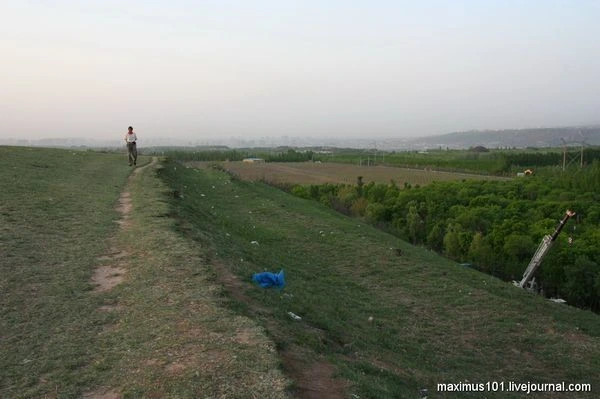
This is not a feather grass steppe, and the top of the step pyramid.
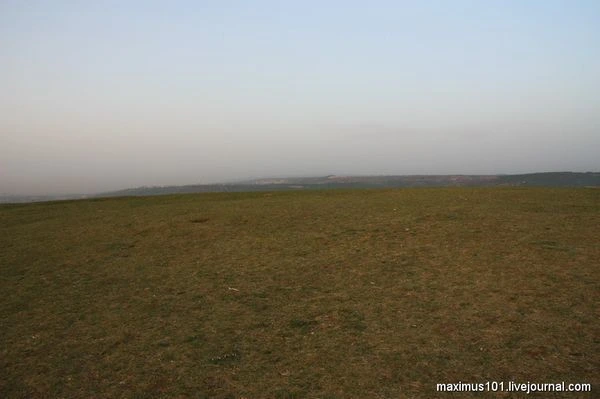
Crane - little ant, compared with a huge burial mound.
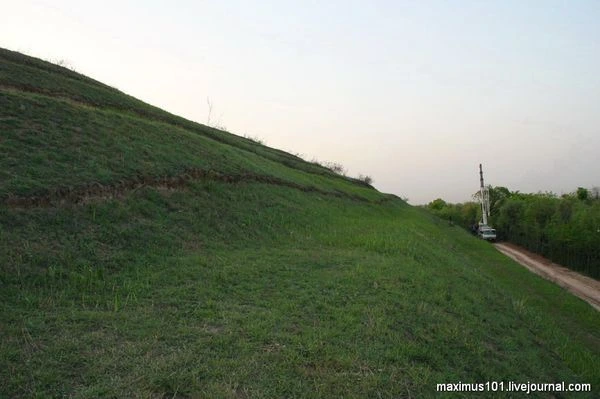
Field pyramids in Doolin. Here are buried many relatives, concubines and dignitaries of the emperor.
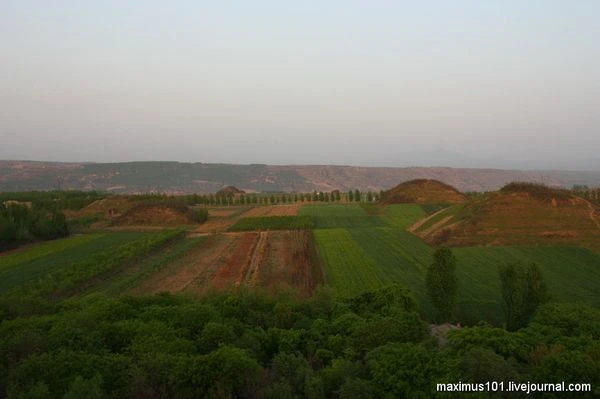
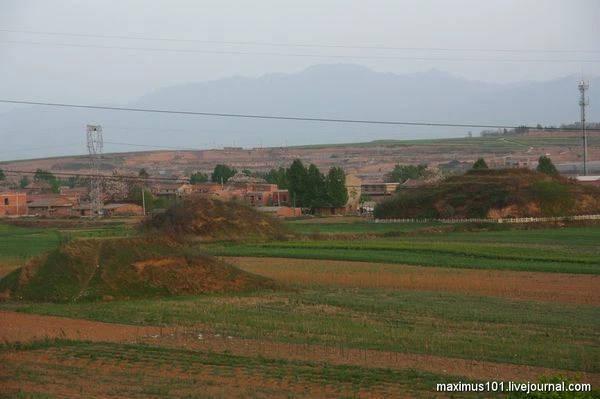
Pyramid burial complex, stretching to the horizon.
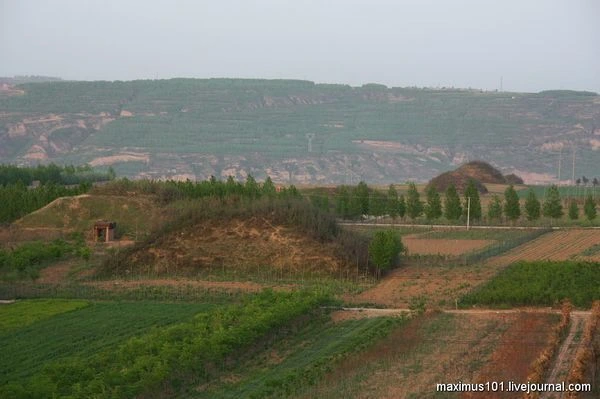
Round mound complex Doolin.
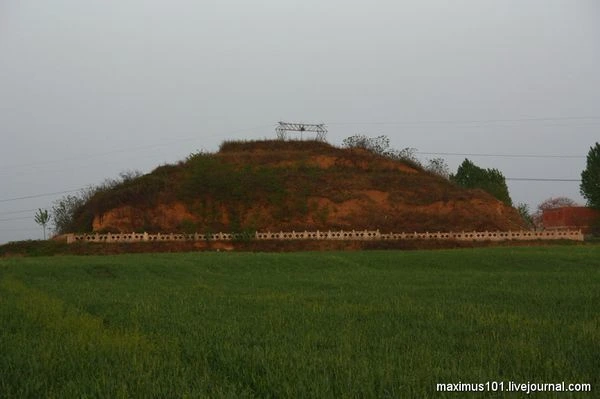
And it remains one of the towers of the fortress town of Doolin funeral. As with all of the Han emperors, and Lin (funeral city) Xuan Di was surrounded by kilometers of fortified walls and had a large population serving mortuary temple of the former ruler and his family.
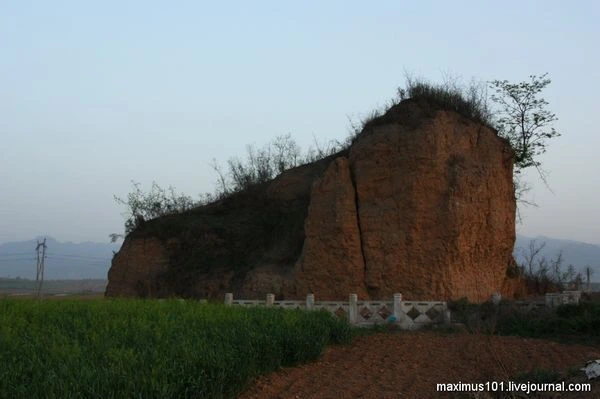
Pyramid of the Empress.
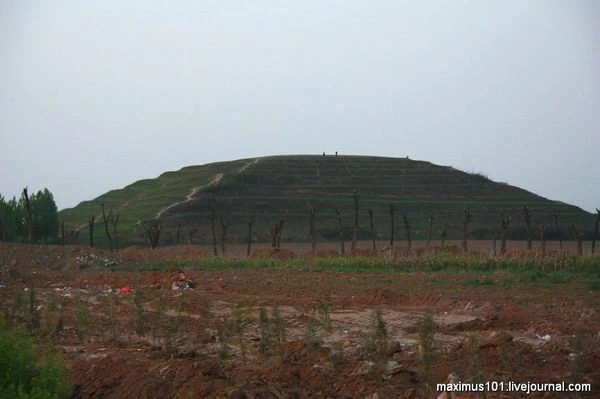
The complex includes Doolin another large pyramid. This tomb of his beloved wife of Emperor Xuan Di Xu Queen. She was poisoned during childbirth, and most likely with the help of the last empress, whose pyramid stands beside the mound Emperor Xuan of Han. That is why the pyramid of Queen Xu is a good distance away from the main complex where some 6.5 kilometers to the southeast. Apparently acting Empress Xu did not allow to bury in the main complex. Reach the pyramid Xu I had no chance, it was getting dark already, and I am somewhat tired by then, or rather I almost could not walk.
So I will take pictures of Chinese photographers.
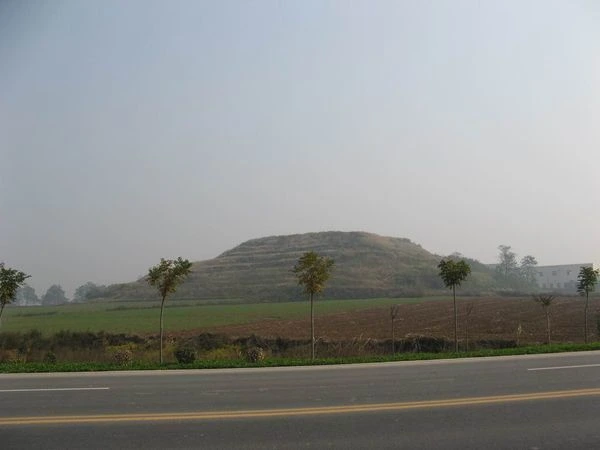
You may notice that the pyramid Xu has a very interesting shape, it's almost Babylonian ziggurat. It has three main stages of large, which in turn carry the still relatively small steps.
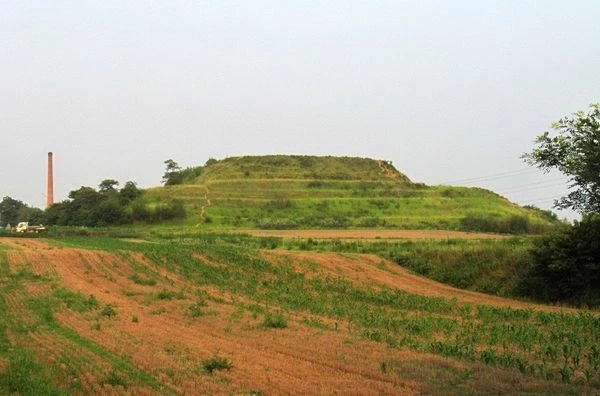
And the great pyramid size - 136 base 120 meters and a height of over 20 meters. Though the mound and stands apart from the main city of the funeral, it is evident that the emperor did not spare forces for the construction of the mausoleum of his beloved wife ... View from the top step of the pyramid of Queen Xu.
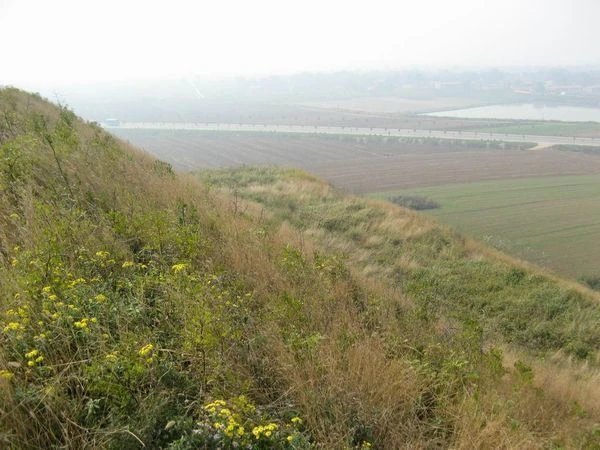
To the west of the funerary complex of Doolin are several graves of the 14th century - the time of the Ming Dynasty. They are smaller in size Han giants, this is understandable, emperors during the era of the Ming lived in Beijing and Nanjing, and there they were buried. In Xi'an could only bury relatives only rulers and the local nobility.

All Ming tombs, there are many stone sculptures - a so-called "alley spirits" shendao. Near the tomb figures I was shooting in the looming darkness.
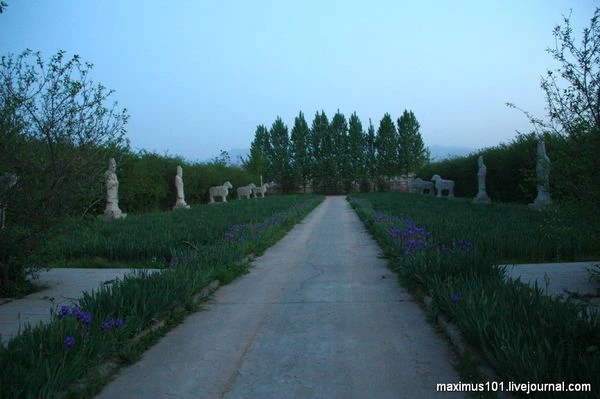
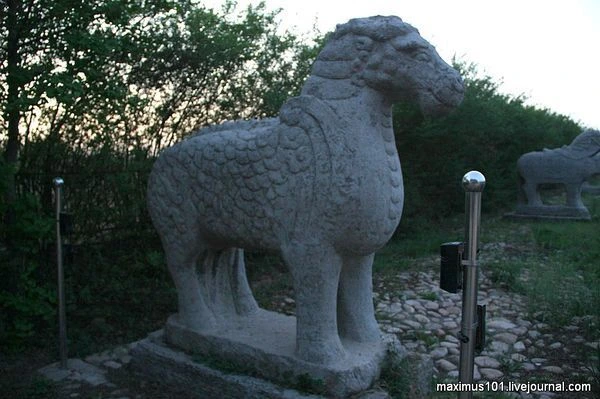
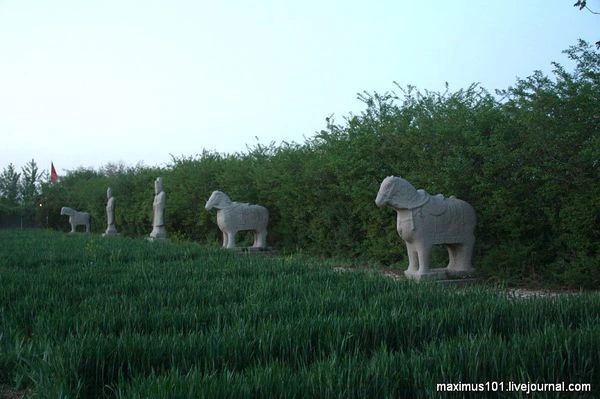
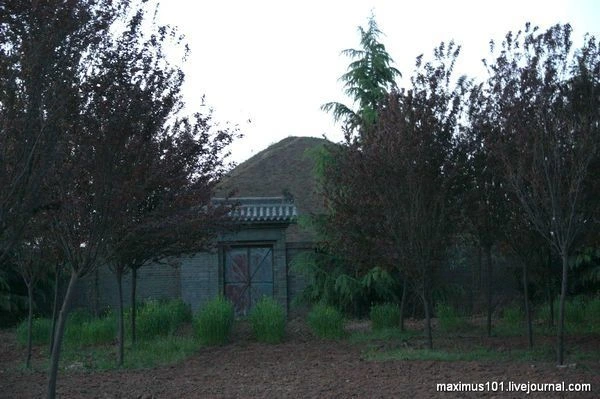
One mound Minsk has a very interesting shape, it is round at the base and at the same time step. It is a pity that because of the darkness I could not reach him.
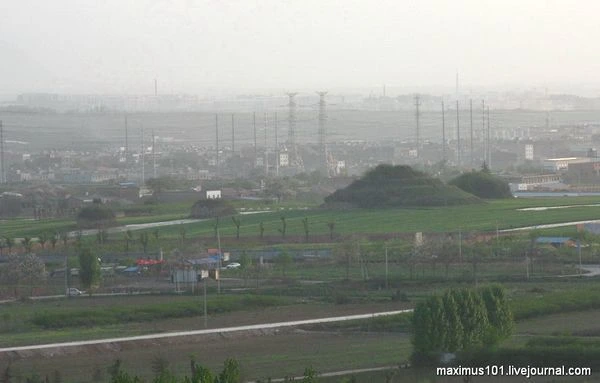
This tomb has an impressive "Valley of Spirits" and worthy of a separate visit. All Chinese pyramids are located in rural areas, so just search for burials can be found with the local populations, such as this.
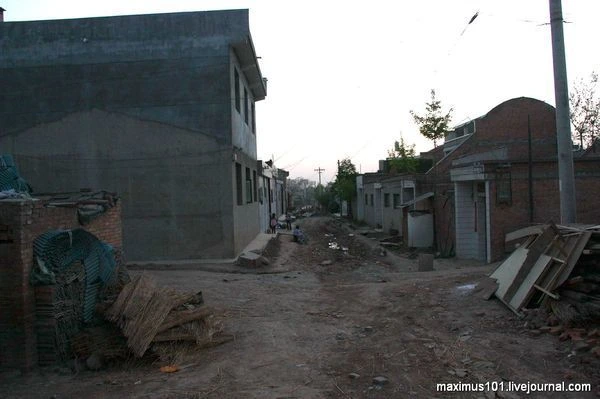
Locals often visit the graves of their great ancestors, so it is unlikely you will explore the pyramids alone.
